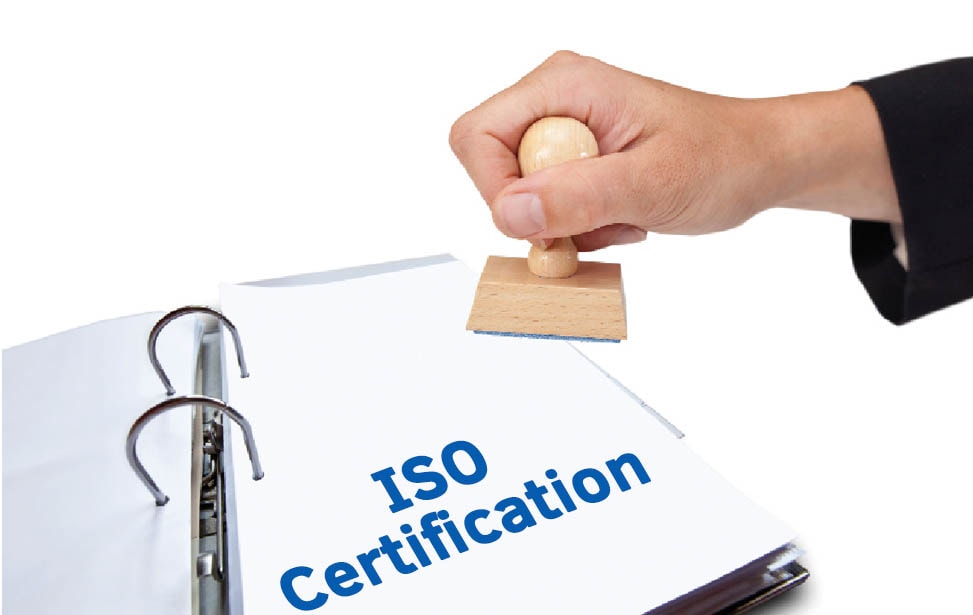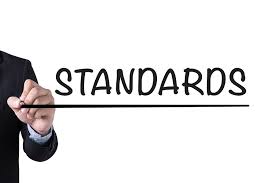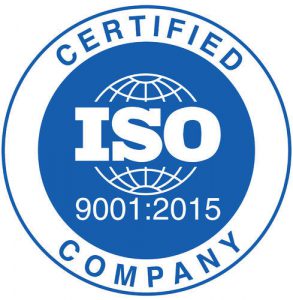Importance and perception of qualities in developing countries
The importance of an ISO will be discussed in this article.The quality system defined by the International Organization for Standardization (ISO) in a 9000 series standard was developed as an outcome of the changes in the market globalization. It is widely accepted and followed by more than seventy countries in the developing and developed regions. These standards serve as important tools for the product quality and management of business operations irrespective of the sector.
The third-party certification of the quality system of an organization is one of the unique features of ISO 9000 standards. This helps in upgrading its image and in establishing its credibility among the worldwide customers. Primarily for this reason that companies in North America and Europe are contributing good amount of resources to set up quality systems to get them certified externally. Huge corporations are more concerned in obtaining assurance for product quality systems, timely delivery from their suppliers.The economies of most developing countries are based on agriculture, which accounts for sixty percent to eighty percent of their gross national products. Their industries are in various stages of development. Manufacturing companies are generally family-owned and professional management is confined to large companies or to production units working under licence from multinationals. Consequently, many producers are not aware of the benefits of quality systems and their effect on profitability and long-term growth. The vast majority of the people are poor and, struggling to meet their basic needs, most have to base their purchasing decisions on price considerations. Furthermore, the low levels of literacy ensure that general consumer knowledge of quality and its implications is negligible. Consumer movements demanding conformity to standards have not yet taken root.

In this ISO environment, many manufacturers, particularly the small and medium-sized, tend to use cheap materials to produce low-priced goods of minimal quality. These are accepted by consumers because they do not know any better and because the alternatives offered by imports are costly. After decolonization in the years following the Second World War, most newly independent countries adopted self-reliance as a national policy and started to develop indigenous industries. To accelerate the pace of industrialization, large State-owned industries were set up for industrial as well as consumer products. To save these nascent industries from international competition, most governments applied protectionist measures such as import restrictions and high customs barriers. The absence of international competition resulted in a sense of complacency, which gave rise to inefficiency and hindered the growth of a quality culture.
Owing to the poor quality image of many domestic products, imported goods are greatly admired, particularly by the affluent who can afford these luxuries. Powerful advertising campaigns by multinationals have further contributed to the development of a blind faith in the quality of imported goods. Industrial buyers appear to have the same perception: imported materials and components are assumed to be of good quality and are accepted with perfunctory checks. Some trading houses take advantage of this attitude and of the lack of adequate testing infrastructures and well-defined purchasing specifications to dump low-grade materials and products in developing countries. These substandard materials, when introduced into manufacturing systems, adversely affect the quality of end-products.
The situation of companies in developing countries is made worse by low levels of working capital, uncertainties in the supply of materials of consistent quality, and difficulties in negotiating the return of defective materials, all of which makes them vulnerable to unscrupulous suppliers.
Structure of the ISO 9000 standards

The ISO 9000 series of standards has two categories primarily such as
- Core standards
- Supplementary guidance standards
Core standards

The five core standards are:
- ISO 9000-1:1994
It can be termed as quality management and assurance standards. It clarifies the principal concepts of quality and provides guidance for the selection and usage of the ISO 9000 standards for quality management and quality assurance.
- ISO 9001:1994 Quality systems
It serves as a model for the quality assurance in design, development, production, installation and service.
- ISO 9002:1994, Quality systems
It serves as a model for the assurance of quality in final inspection and test of the system or product.
- ISO 9004-1:1994
This provides the essential guidance for the management of quality and quality system elements. This standard is for the internal use by the organizations to provide assistance in designing and implementation of a quality system so that they can meet their market demands and succeed.
Supplementary standards

- ISO 8402:1994
This serves as a vocabulary of quality management and quality assurance.
- ISO 9000-2:1993
This standard provides guidance for application of ISO 9001, ISO 9002 and ISO 9003 and for the quality management and quality assurance.
- ISO 9004-2:1991
Provides guidance for services of quality management and quality system elements.
- ISO 9004-3:1993
This ISO standard Guidance for processed materials, quality management and assurance elements.
- ISO 9004-3:1993
Guidance for the betterment of quality.
-
ISO 9000-3:1991
This standard provides guidance for application of ISO 9001 for development supply, maintenance of software, quality management and quality assurance.
- ISO 10005:1995
Guidance related to quality management for quality plans.
- ISO 10007:1995
This ISO standard provides guidance related to configuration management.
- ISO 10001-1:1990
Guidance related to the auditing of system quality.
- ISO 10011:1991
Guidance related to auditing, management of auditing programs.
- ISO 10013:1995
This ISO standard provide guidance for the development of quality manuals.
Perceptions and misconceptions
The governments of a number of developing countries have recognized the problems engendered by a sheltered economy and the absence of competition. They are now taking corrective action. There are other equally important factors which are attributable to industry itself rather than to market conditions. These include the failure to apply modern tools of management and the emphasis on short-term gains rather than on long-term growth. The biggest impediment to upgrading quality in industry in developing countries is the manufacturers’ lack of awareness of its economic benefits. Quality is regarded as a socially desirable objective, but its contribution to the profitability of any business is considered marginal. This is the result of a number of misconceptions, as outlined below
Misconception 1

Higher quality costs more. This is the most generally held misinterpretation about quality. In any case, new experiences into the instruments of value building and assembling forms have demonstrated that high calibre does not generally cost more. It is imperative to see how quality is incorporated with an item in present day generation forms.
Quality is first characterized on paper as a structure drawn up based on market needs. The ISO plan is then converted into a genuine item by fitting assembling forms. The venture of more assets in innovative work (R&D) can result can result in a checked improvement in item quality. All the while, refining the assembling procedures can prompt considerable decreases in generally speaking item cost. This has been adequately exhibited in both Japan and the West over the range of modern merchandise. PCs, shopper gadgets and family unit apparatuses are especially genuine precedents. All through the most recent two decades the nature of these things has logically enhanced while their expense in genuine terms has dropped.
Misconception 2
Accentuation on quality prompts diminished efficiency. There is a far reaching idea among creation administrators that quality can be accomplished just at the expense of amount. This view is a heritage of the period when quality control comprised to a great extent of physical examination prerequisites only brought about the dismissal of a more prominent extent of the yield. In any case, quality control has since turned out to be unmistakably increasingly advanced. The accentuation has now moved to anticipation amid structure and fabricate, with the goal that deficient articles are not delivered in the primary example. Endeavours of ISO to enhance quality and increment creation have consequently turned out to be correlative, in that quality improvements for the most part lead to higher profitability.
For example, a standout amongst the most essential quality-affirmation exercises is the survey of a structure before it is discharged for creation. This survey sets up whether the structure is in reality equipped for meeting the clients’ expressed or assumed prerequisites. It likewise decides if the item can be effortlessly produced with the current plant and apparatus. In the event that fundamental, the structure of parts is, changed with the goal that they can be fabricated by the most temperate process conceivable.
Another essential quality movement for ISO is the structure of dances and apparatuses to guarantee that different positional highlights are machined precisely to determined resilience. Appropriately structured dances and apparatuses as a rule lessen work stacking and machine set-up time, in this manner straightforwardly expanding efficiency. It can accordingly be seen that quality-related exercises straightforwardly or by implication will in general outcome in higher efficiency.
Misconception 3:
The work constrain is completely to fault for low quality. Makers in creating nations frequently accuse the low nature of their items on the absence of value cognizance and the poor work culture of their specialists. A more profound investigation of this ISO demonstrates that specialists can be held.
Capable just if the board:
- Has altogether prepared the administrators of process gear;
- Has given these representatives gritty guidelines on what to do;
- Has set up the way to check or survey the after effects of these workers’ activities; and
- Has gave the way to directing the hardware or the procedure if results are observed to be inadmissible.
A legit examination of many assembling units in creating nations is probably going to demonstrate that administration has neglected to give these imperative contributions at most work stations. Instead of discovering substitutes, organizations need to look at shortcomings in their administration frameworks.
Misconception 4
Quality advancement of ISO requires extensive speculations. There is a generally held thought that a sorted out quality advancement program needs overwhelming interest in new plant and gear. Be that as it may, this isn’t really valid. Plants and hardware establish just a single segment of an aggregate framework. Without anyone else’s input, they are not adequate to guarantee high calibre. While various organizations in creating nations have plants and hardware like those utilized in Europe and North America, the nature of their items stay worse than average. On the other hand, a few organizations using indigenous gear can make items worthy in Europe and Japan.
Much of the time, quality can be altogether enhanced by making mindfulness among work force about gathering client prerequisites, institutionalizing forms, preparing agents, and implementing specialized control. These don’t require an overwhelming money related venture, yet just a profound responsibility to quality and narrow mindedness of deviations with respect to the board.
Misconception 5:
Quality can be guaranteed by strict review. Review was the primary formal quality-control component toward the start of this century and most makers still trust that quality can be enhanced by strict examination. ISO ought to be unmistakably comprehended that assessment can just prompt the isolation of good from awful pieces; it can’t independent from anyone else enhance the nature of a fabricated item. Moreover, while ongoing investigations have demonstrated that 60% to 70% of all imperfections recognized on the shop-floor are specifically or in a roundabout way owing to slips in regions, for example, plan, process building and buying, all review and quality-control exercises are coordinated at the shop-floor.
It ought to be focused on that quality control isn’t a disconnected action which can be done by the review office alone. To be viable, it must incorporate the activities of all divisions including those in charge of promoting, structure, building, acquiring, generation bundling, dispatch and transportation. Truth be told, quality control must cover the two providers of information material and clients. It is critical to comprehend client necessities and to get an exact input on their view of the items they get.
Earnlogic, being one of the leading ISO certification consultant in Bangalore can help you in getting an ISO certification for your company or product.
For more details visit earnlogic.